Why Maharashtra’s farmers are embracing Kesar’s resilience and reliability






The dawn of the 2025 mango season in Pune’s Agricultural Produce Market Committee (APMC) yard was nothing short of historic and dramatic. In a stunning twist that sent ripples through Maharashtra’s mango-loving community, the very first crate auctioned was not the legendary Hapus (Alphonso), but the vibrant Kesar. This prized 5.5 kg crate, sourced from the fertile lands of Devgad, commanded a jaw-dropping ₹31,000—an emphatic statement of the Kesar’s rising dominance and desirability.
“This suggests a growing market preference for the variety, which may influence farmers’ decisions to cultivate it over Hapus due to consistent demand and competitive pricing,” says Dr. Bhagwanrao Kapse, an advocate for Kesar mango cultivation and the former Director of Pune-based National Institute of Post-Harvest Technology. He has mentored farmers, horticulturists, and agri-entrepreneurs in the Marathwada region about best practices in Kesar mango cultivation and marketing.
For decades, the Hapus has been the undisputed king of mangoes, celebrated for its rich, buttery flavour, intoxicating aroma, and smooth, fibreless pulp. Grown primarily along the Konkan coast, it has enjoyed a cult-like following both in India and overseas, fetching premium prices and inspiring poetry, art, and fierce regional pride. But now that the "king of mangoes" has a rival, things appear to be shifting.

The proof: farmers in Maharashtra are displaying a stronger preference for Kesar.
The Gir Kesar mango–also called Kesar–was first grown in Gujarat in 1931, with grafts planted on the foothills of the Girnar Hill of Junagadh. It was the Nawab of Junagadh who, taken by the sweetness and bright orange pulp of this particular variety, named it after the saffron spice. Ever since, the Kesar has been cultivated across the Saurashtra and Kutch region of Gujarat; particularly well-loved are the honey-sweet mangoes that come from the districts of Gir, Talala and Mangrol.
While the Kesar eventually made its way to Maharashtra, the state has always dominated the cultivation of the iconic Hapus, traditionally in the Konkan region (Ratnagiri and Devgad are two leading districts in its production); it was, after all, planted right along the Konkan coast in the 1500s, grafted to be sweet, and pulpy, yet easy to cut into neat slices for the dining table.
But the Hapus was grafted for a climate that has turned drastically in over 500 years, while the young Kesar still stands resilient to these changes.
In the last decade, Kesar cultivation has also gained traction in areas like Marathwada and North Konkan. Farmers in these regions are increasingly switching to Kesar due to its regular fruit-bearing cycle (unlike Hapus, which often bears fruit in alternate years) and lower investment needs, among other reasons.
Also read: At this mango ‘museum’ in Gujarat, 300-plus varieties thrive
The Hapus is a diva among Mangoes, but growing it requires very specific conditions. It demands a delicate balance of temperature, humidity, and rainfall conditions found in the narrow coastal strip of Konkan. Here, the monsoon brings just enough rain, and the sea breeze tempers the heat, creating the perfect environment for the Hapus to thrive. Sadly, climate aberrations and the problems they bring have pushed up production costs because of extensive crop management. Ultimately, this has led to a fall in yield. This year, Maharashtra’s Hapus yield plummeted to a mere 35% of the previous year’s harvest, marking the lowest yield in the last 20 years.
Sandesh Patil, who owns an orchard spread over 24 acres on the foothills of Kankeshwar in Alibaug, elaborates: “The Konkan rain pattern has shifted, indicating a longer monsoon return. The delay in the beginning of winter and unseasonable rains every day of the month cause crop infestations that are uncontrollable with pesticides, raising production costs. The fruit is scorched because the heat that usually occurs in April starts in February.”
Hapus trees are shallow-rooted and highly sensitive to drought, heat waves, and erratic weather. They are prone to diseases like “spongy tissue”–causing some parts of the flesh to turn pale and soft–and kapasi, which can devastate entire orchards. As climate change brings more unpredictable weather–seasonal rains, scorching summers, and dry spells– Hapus farmers are increasingly at the mercy of nature.
A study comparing costs found that cultivating Alphonso costs around ₹3,00,000 per hectare, while Kesar comes in at around ₹80,000 per acre. With higher yields and lower risk, Kesar offers a more reliable and profitable proposition for farmers.
Kesar vs Hapus on the plate
Is one variety tastier than the other? Can such a question even be asked?
Renowned food writer & consultant–as well as a mango lover–Madhulika Dash expands on the taste of Kesar versus Hapus mangoes, an ongoing debate. “Hapus, known for its rich, creamy texture and well-balanced sweet-tart flavour, remains the more favoured variety in terms of taste. Nevertheless, Kesar, a native variety, is equally enchanting. Kesar mangoes are distinctly sweet, with a delicate floral fragrance and a straightforward honey-like taste. Although their flavour is exceptional, their flesh tends to be firmer and occasionally slightly grainy.” She further notes, “Alphonso strikes a perfect balance, with a slight tang that complements its sweetness, resulting in a luscious experience cherished by mango enthusiasts. Ultimately, the choice between Kesar and Hapus depends on individual preference–whether one desires a pure, floral sweetness or a more complex, layered flavour profile.”
Consumers’ preference of Kesar over Alphonso could certainly inform cultivation patterns–and this is all the more evident in Indian exports, where Kesar has overtaken Hapus–but it is not the only factor. For farmers, the preference for Kesar is not merely a matter of taste but a response to a complex interplay of climate, economics, agronomy, and global market forces. The story of this transition is as layered and nuanced as the flavours of the fruits themselves: a tale of resilience, adaptation, and hope for the future of Indian agriculture.
Also read: No monkeying around on this kiwi farm
Climate and cultivation
What makes the Kesar mango so favourable to the elements?
Low humidity (35-50% for most of the year) reduces the risk of fungal diseases, and the well-drained soils allow Kesar trees to tap into groundwater reserves. These circumstances not only guarantee the trees' survival but also improve the fruit's quality, resulting in Marathwada Kesar mangoes having some of the highest sugar contents (up to 24° Brix) of any Indian variety.
In fact, the Marathwada Kesar earned a Geographical Indication (GI) tag in 2016–even before Maharashtra’s Alphonso.
Kesar is a survivor. Its deep-rooted trees are well-adapted to the hot, dry, and often harsh conditions of inland Maharashtra. The Marathwada region, lying in the rain shadow of the Sahyadri hills, receives moderate and variable rainfall (about 90 cm annually), with long, dry summers and cool winters. The fruit has sugars and flavour compounds which are developed by the vast diurnal range of winter temperatures, which can reach 38–43°C during the day and drop to 20°C at night.

For farmers, the bottom line matters. Kesar mangoes offer several economic advantages. Thanks to modern planting techniques like ultra-high-density planting (UHDP), Kesar orchards can accommodate up to 400 trees per hectare, compared to 80-100 trees per acre for traditional Hapus orchards. This dramatically increases output per unit area.
The proof is in the mango pudding
Curiously, Parmanand Gavane's farm in Belanki, which is 25 km from Sangli district’s Miraj town, has evolved into a mango grower's paradise; it remains the best illustration of UHDP. The number of visitors to his four-acre farm with 3,600 Kesar mango trees peaks in May and June, when the trees are laden with fruit. These tourists are primarily farmers from Maharashtra, Andhra Pradesh, and Karnataka. Gavane's plantation is a "super UHDP," with 900 plants per acre as opposed to the usual 674 plants per acre. Although he harvests about 8 tonnes per acre, he thinks that more can be accomplished with good orchard management.
Gavane stresses on the benefits of UHDP: particularly, its ability to increase productivity up to 2-3 times, reduce water used for irrigation up to 50 per cent and increase fertiliser intake by plants. He spends close to ₹1,00,000 per acre, which includes fertiliser and labour costs and ends up with a profit of ₹6,00,000 per acre. Additionally, he sells around 40,000 saplings of Kesar every year.
Thriving orchard and nursery
By developing an orchard in his hamlet Antral in the Jat Taluka of the Sangli district in 2010, Kakasaheb Sawant challenged the farmers' belief that Hapus could only be produced in the Konkan.
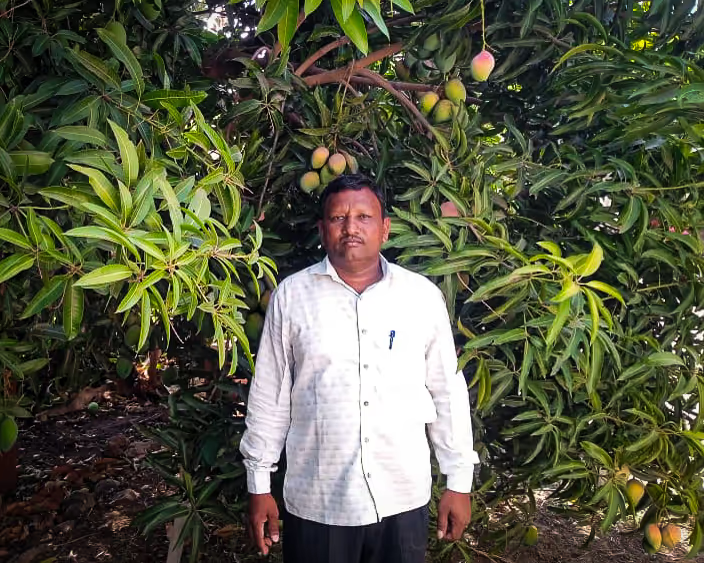
Today, farmers in the Marathwada region and even certain areas of the Konkan belt buy Kesar mango saplings from his orchard-cum-nursery: named for the forest goddess Banashankari, it is situated on 25 acres in an area prone to drought. Sawant has installed two 4-km-long pipelines to supply water from the Krishna River's Mhaisal Lift Irrigation Scheme to irrigate his orchard and nursery. A farm pond, known as shet tal locally, has been constructed with funding from the State's Agriculture Department. “Since 2015, when I started the nursery, I have sold over seven lakh Kesar saplings,” says Sawant, who was honoured with the Udyan Pandit award by the Maharashtra government.
Kesar mango growers are abundant in Marathwada–primarily located in districts such as Aurangabad (Chhatrapati Sambhaji Nagar), Jalna, Beed, Latur, Osmanabad, Nanded, Parbhani, and Hingoli. Aurangabad leads with over 40,000 hectares under cultivation, supported by notable nurseries like Devendra Nursery, and exporters such as Sushil Agro Farms and JAY Agro Export. The Marathwada Mango Growers Association plays a key role in expanding cultivation and facilitating exports.
Latur accounts for about 15% of the region’s Kesar mango area, with government-backed facilities for pre-cooling and packaging to boost exports. Other districts also have significant growers adopting solid and UHDP methods. Large agribusinesses like Bikkad Agritech and Aurum Farms operate extensive estates promoting sustainable, high-quality production.
Dr Kapse further explains why: “The region’s hot, dry climate enhances the mango’s saffron-like colour, sweetness, and size, making Marathwada Kesar mangoes highly prized domestically and internationally. Collectively, individual farmers, associations, and agribusinesses have established Marathwada as a major Kesar mango production and export hub.”
Also read: Inside one of India's biggest mango markets
Export success
In exports, Kesar dominates Indian mango shipments, making up about 70% due to its longer shelf life, resilience to handling, and suitability for treatments like vapour heat and irradiation.
Major markets include the US, UK, Canada, and the Middle East, where demand is growing rapidly. This export growth has driven investments in cold storage, grading, packaging, and irradiation infrastructure, reducing post-harvest losses and increasing farmer returns.
India’s mango exports are rising, overall, with a 19% increase in volume in 2023, valued at nearly $48 billion, and Kesar mango pulp exports alone reached $19.35 million in 2023-24. The US is the largest importer of Kesar pulp, followed by the UK and Canada. This export success complements a strong domestic market where Alphonso remains highly prized but limited by seasonal and weather challenges, while Kesar’s steadier availability helps balance supply and farmer income.
Within India, Kesar mango benefits from favourable market timing, arriving just after the Alphonso season to fill a supply gap with a consistently available, more affordable premium mango that stabilises farmer incomes. Though priced lower than Alphonso, Kesar’s broader consumer appeal supports steady demand.
The story of Maharashtra’s mango farmers is one of adaptation and innovation. Faced with the twin challenges of climate change and market volatility, they are embracing Kesar as a way to secure their livelihoods and continue India’s long and revered relationship with mangoes. While Hapus will always hold a special place in the hearts of mango lovers, Kesar is rapidly carving out its legacy, testament to the resilience and ingenuity of India’s farmers.
{{quiz}}
Explore other topics
References

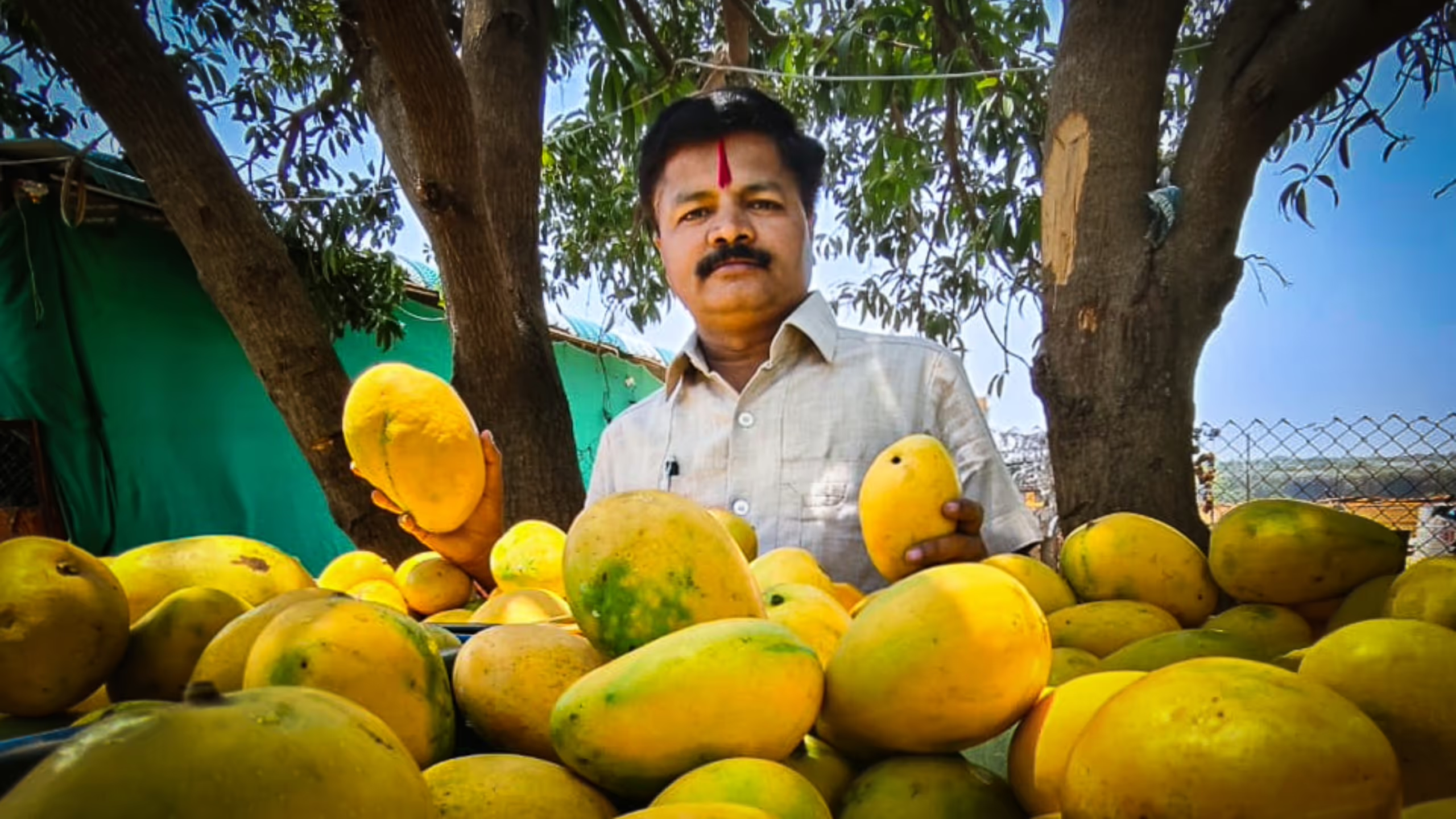
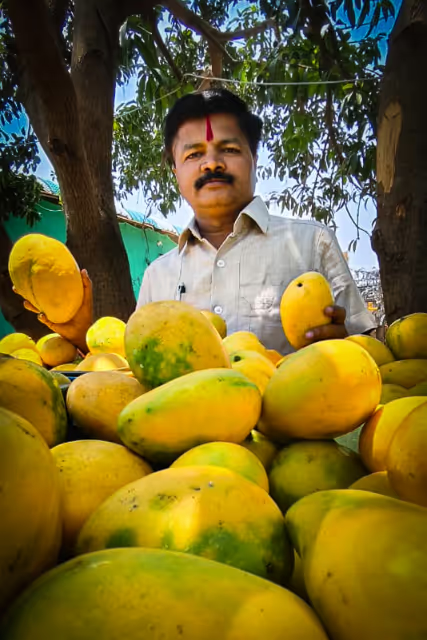

.avif)

.avif)

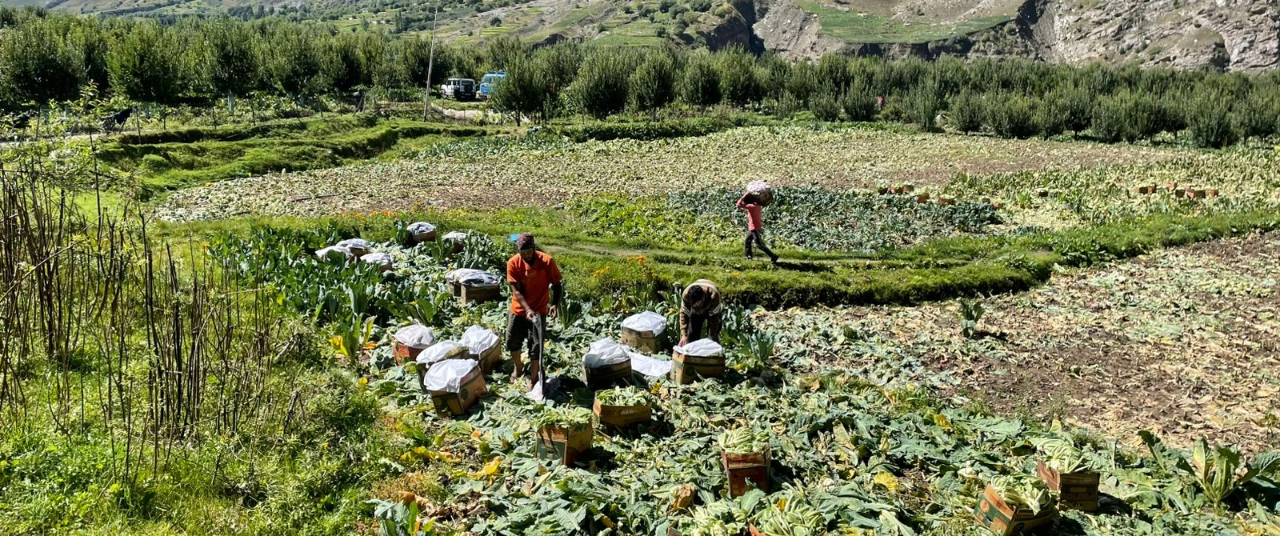
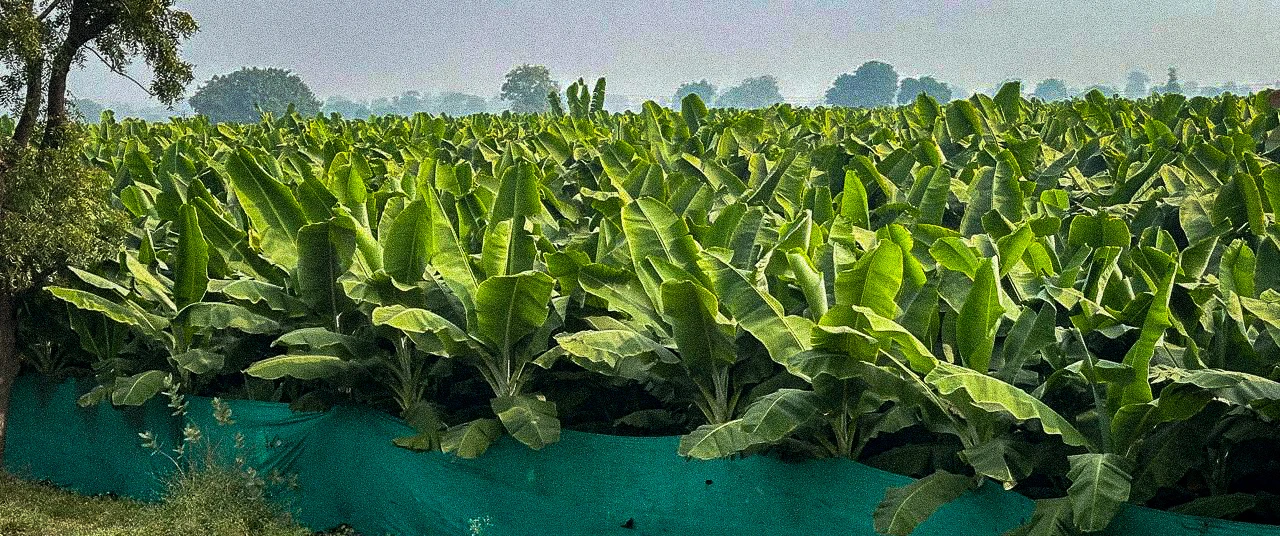
.png)
